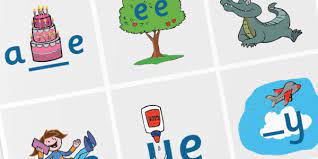Phonics - further information and videos

What is phonics?
Synthetic Phonics is an approach to word reading that explicitly teaches the correspondences between individual letters or groups of letters and their related sounds (graphemes and phonemes), as well as the skill of blending the individual sounds together to read whole words. This skill can then be inverted so that words can be broken down (segmented) into their component sounds in order to spell them. Much evidence has been collated in recent years to show that teaching children to read words using Synthetic Phonics has a positive effect on children’s long-term ability to read and comprehend text.
Around 50% of English words are decodable if the reader has the necessary skills, of the remaining words, the majority have only a vowel sound, that is not regular. This means that if we teach children to read words using a synthetic phonics approach, we are equipping them to read, at first try, at least half of all words in the English language and to have a good chance of working out the tricky GPC in most of the remaining words.
A phoneme is defined as the smallest unit of sound into which a spoken word can be broken down. For example, in the word ‘cat’ there are three phonemes /c/ … /a/ … /t/. In this example, each phoneme is represented by a grapheme comprised of one letter.
The word ‘cheese’, in contrast, also comprises three phonemes /ch/ … /ee/ … /z/, but in this instance, the graphemes that represent the phonemes each have two letters: ‘ch’, ‘ee’, ‘se’. Graphemes can be comprised of either one, two or three (very occasionally four) letters and there will always be the same number of graphemes in a word as there are phonemes.
In our synthetic phonics programme , children are first taught the most common GPCs in the English language so that they can quickly begin to apply this knowledge to read whole words (blending), and soon after, to spell them (encoding). Over the course of the programme, they will be introduced to a number of alternative ways of representing the same phonemes, including some of the less-common GPCs.
At our school we use FFT “Success for All” Phonics (a validated scheme) to teach phonics. This is used daily from the beginning of Reception, enabling children to make a smooth transition from Reception to Year 1.
Daily lesson plans cover all the main Grapheme–Phoneme Correspondences (GPCs) and Common Exception Words to provide children with the phonic knowledge and skills required for success in reading and writing.
Teaching Sequence
We have very clear expectations about what sounds will be taught and when, alongside which common exception words will also be taught. These are then matched to your child’s reading book (based on the phonic knowledge they have secured) in order for them to continue to practise these skills when reading (both at home and in school).
Teachers will assess which phonics skills have been mastered by children at each phase. Assessment is based on daily classroom work and observation, capturing children’s responses to questions and their oral and written learning. Children’s interactions with books and other texts will give teachers a good indication of how well they are able to apply their phonics knowledge and skills to reading.
Shared Reading Lessons
We want our children to be fluent readers, so shared reading sessions are to teach children how to read (using their phonic knowledge to date) and to model fluency in reading.
It is important that children can apply their phonic skills to reading. Children have a daily reading session, based on the phonic skills they have been taught. We use fully decodable texts to give children opportunity to use their new skills. We also give children the opportunity to discuss higher tier vocab, to ensure children understand what they are reading.
Supporting your child at home:
We will invite you into school to watch a phonics lesson and to discuss with your class teacher how you can further support your child at home.
When supporting your child with their phonic skills, it is vital that you say the phonic sounds correctly. The videos below will support you with doing this.
Children in Reception will learn the sounds in sets 1-4:
